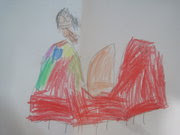
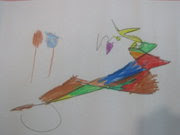
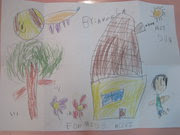
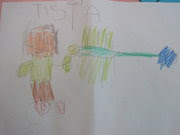
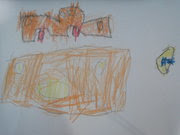
Exposure to Drawing
When I first joined the school I work at now, they were already in the middle of the first term. In the end of the Term 1, I started to notice how minimum the students' interest in drawing was. Drawing is one of the most activities that children can do. It helps to develop a wide range of child's developmental skills, starting from his fine motor skills, imagination and art skills by letting him expressing himself creatively, also his thinking and language skills as we are requiring them to label and discuss about his drawings. Although for in early age, a child's drawing might not be more than just some shapeless scribbles, but we still can encourage them to speak about his choices of colours or the shape he creates. So try to change the "What is this?" question with "What colour do u use?" for a very young child, because he might not have any clue of what he is drawing.
So, in the beginning of Term 2, I started to find times to give my students opportunity to draw. The perfect slot was after their snack time. They usually had around 10-15 minutes times left before the next session began. I gave them options between reading books or drawing.This is also a good way to prevent them from running around the class after eating. At the top of our toys-shelf, there's a stack of blank white A5 papers, that they could get if they wanted to draw. Also, I made them their own personalized drawing box to store their drawing pieces. By doing this, it will give them the sense of belonging and responsibility of their own properties. Once in a while I caught some of them tidying up their papers, folding them into half and storing them nicely in the box. You might want to try this at home.
After several months being exposed to drawing, the students started to show progress in their way of drawing and the results. Just like any other concepts or skills that a child is learning, there are also stages in drawing. Child's ability to reach the milestone in drawing stages varies depending on their ages, exposure to drawing and also how often he draws. Provide child with lots of time for free drawing and let him draw what he wants. Encouragement and praises will also be needed to help your child boost their interest and confident in drawing.
The last thing and yet is important, try not to forget that it is the process of drawing that is important, not the end result. Your child might show you his drawing that you might not be able to recognise, but it's his work. Praise it.






No comments:
Post a Comment